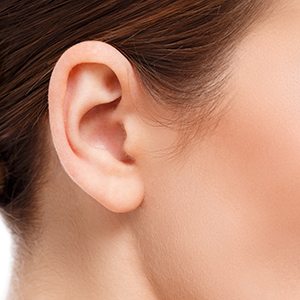Ear Surgery (Otoplasty)
 Prominent or misshapen ears can have a negative impact a person’s self-esteem. Oftentimes, ears that protrude from the side of the head can appear to be disproportionate with the rest of the facial features. Other ear abnormalities – such as Stahl’s ear, cup ear, or lidding ear – can significantly affect the overall shape of the ear. With otoplasty, our plastic surgeon—John Sarbak, MD—can help patients improve the shape and position of their ears for enhanced facial harmony and self-confidence.
Prominent or misshapen ears can have a negative impact a person’s self-esteem. Oftentimes, ears that protrude from the side of the head can appear to be disproportionate with the rest of the facial features. Other ear abnormalities – such as Stahl’s ear, cup ear, or lidding ear – can significantly affect the overall shape of the ear. With otoplasty, our plastic surgeon—John Sarbak, MD—can help patients improve the shape and position of their ears for enhanced facial harmony and self-confidence.
- What is Otoplasty?
- Otoplasty Benefits
- Otoplasty Candidates
- Otoplasty Procedure
- Earlobe Repair
- Otoplasty Recovery
- Otoplasty Results
What is Otoplasty?
Otoplasty is a type of cosmetic ear surgery designed to improve the appearance of the ear. This procedure can be used to reposition overly prominent ears or correct ear deformities. There is no health risk posed by irregularly sized, abnormally shaped, or unusually positioned ears; however, many patients with these conditions can feel self-conscious about their appearance. Particularly in cases with young children, ear abnormalities may become a source of teasing or taunting. After repositioning, resizing, or reshaping the ears for a more proportionate and balanced look, patients often report a renewed sense of self-esteem. This confidence can play a particularly important role during a child’s formative years at school.
Benefits of Otoplasty
Depending upon the nature of the abnormality, otoplasty can enhance the appearance of the ear in a variety of ways, including:
- Repositioning or “pinning back” protruding ears
- Decreasing the size of the ears
- Improving the symmetry between the ears
- Correcting common deformities in the shape of the ears
- Enhancing overall facial harmony
Candidates for Otoplasty
Candidates for otoplasty are typically at least five to six years old, at which time the ear is almost fully grown. It is not uncommon for otoplasty to be performed on older patients as well. Ear deformities that may be corrected with otoplasty include constricted or cupped ear, lidding ear, Stahl’s ear, missing antihelical folds, or enlarged conchal bowls. The best way to determine if you or your child is a good candidate for ear surgery is to schedule a consultation with a board-certified plastic surgeon like Dr. Sarbak.
The Otoplasty Procedure
For nearly all otoplasty procedures, our plastic surgeon makes an incision either behind the ear or within the ear’s natural creases. The underlying cartilage can then be repositioned and contoured for an improved appearance. By carefully planning the surgery with aesthetics in mind, any scarring can be virtually undetectable. Otoplasty can be performed under local or general anesthesia, depending upon the surgical plan and the needs of the patient.
Earlobe Repair
Our plastic surgeon also specializes in repairing earlobes that have been torn, stretched, injured, or otherwise damaged. This procedure is designed to restore the natural aesthetic appearance of the earlobe, and is often performed for patients who have had an earring torn out, have worn heavy earrings that have permanently elongated the lobe, or worn large-gauge plugs that have stretched the size of the lobe. In most cases, the scar from earlobe repair is quite small, and your plastic surgeon can typically perform this procedure in the office using local anesthetic.
Otoplasty Recovery
As with any surgery, patients can expect some mild swelling and bruising. In most cases, these side effects quickly subside. Patients may use oral pain medication to manage any discomfort. A head wrap is typically worn the first day of recovery. Afterward, Dr. Sarbak recommends wearing a post-operative garment or protective headband around the ears. Within five to seven days, both adults and children can return to their normal daily activities. It is important that strenuous activities carrying a risk of ear impact be avoided for several weeks until the healing process is complete.


